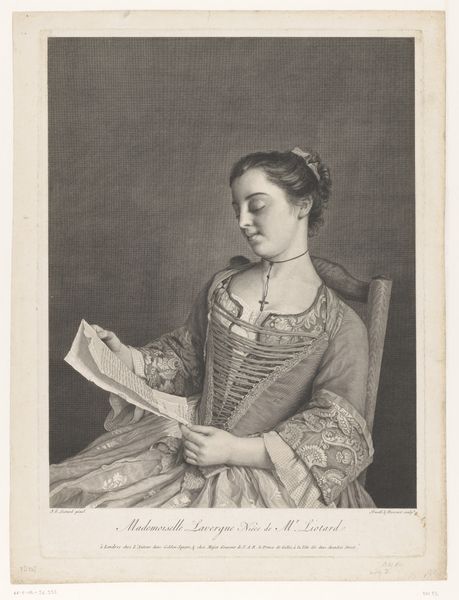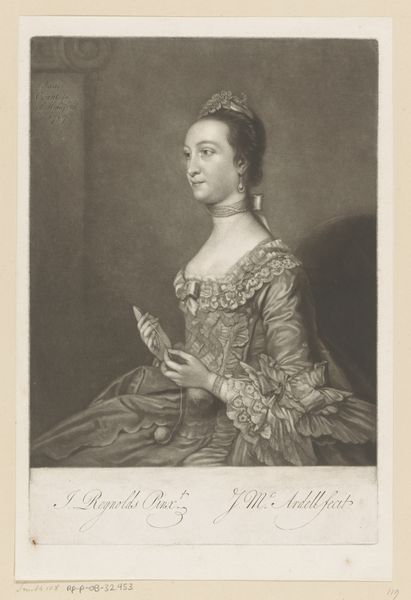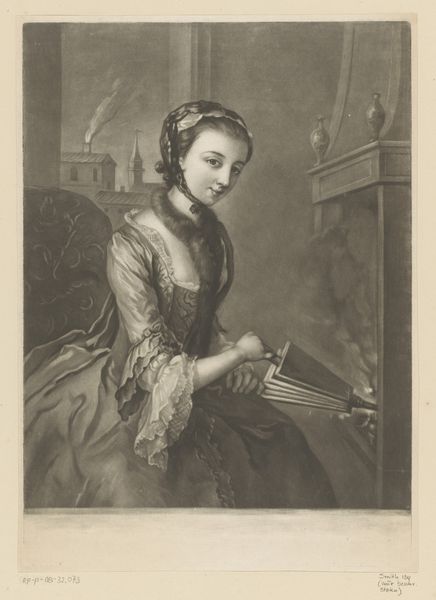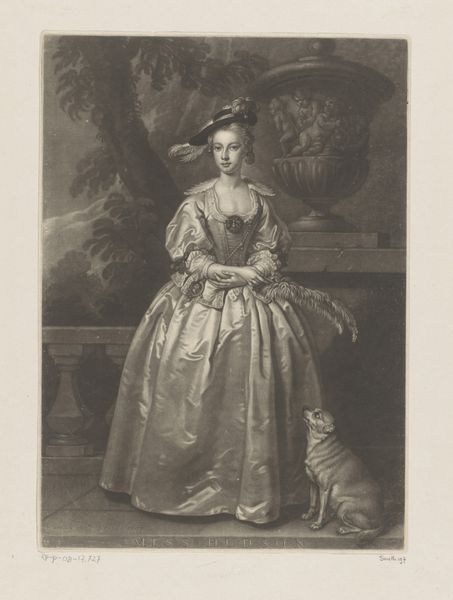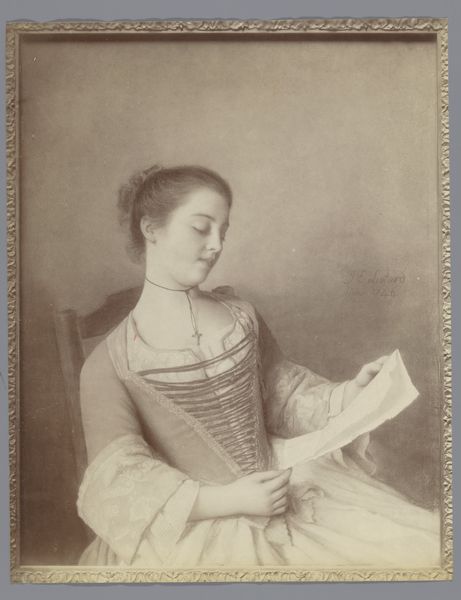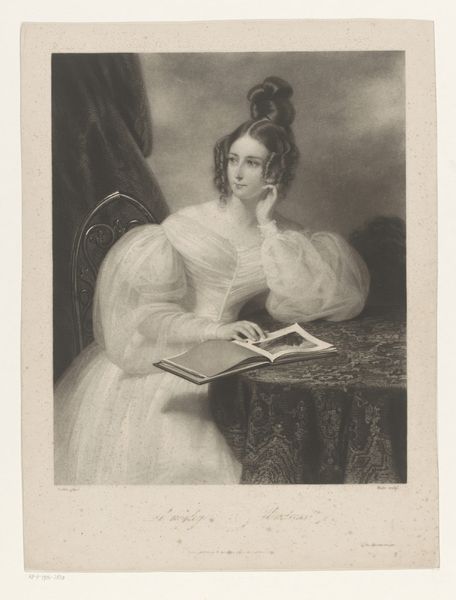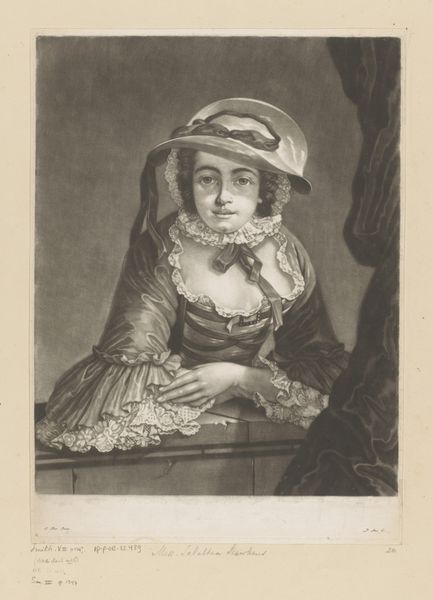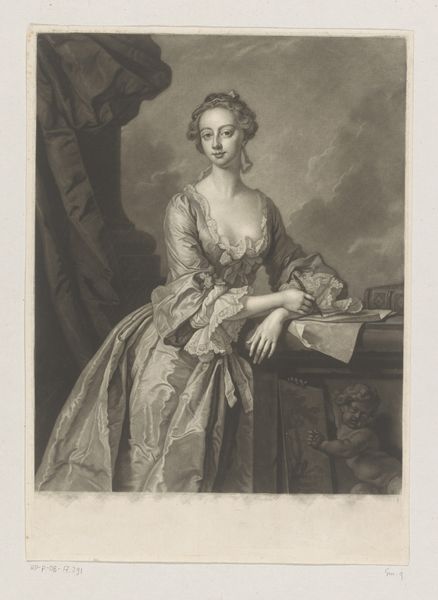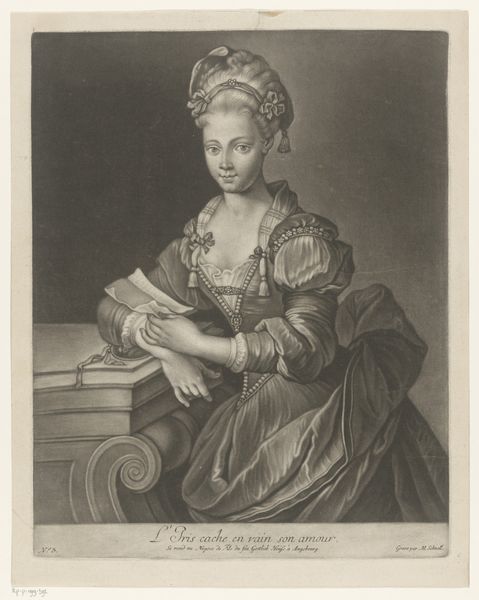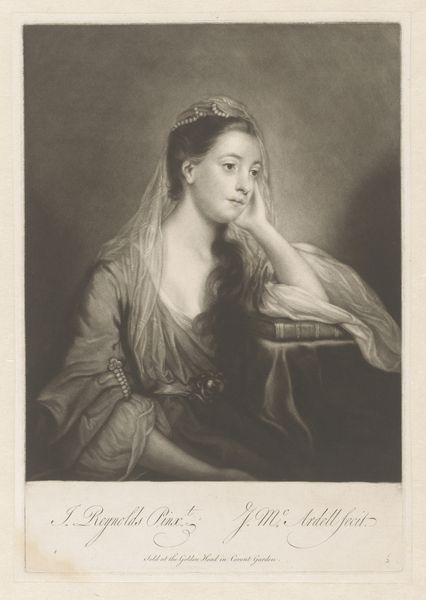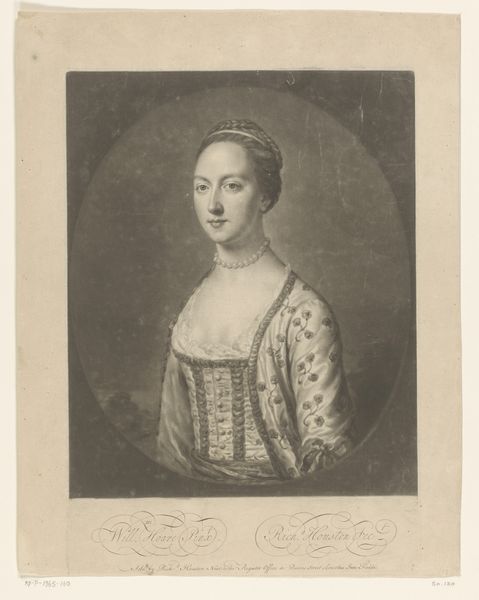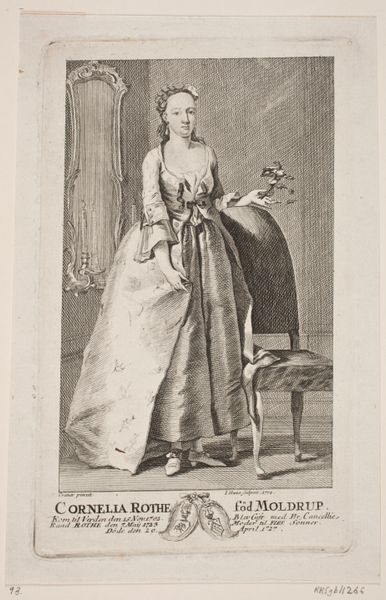
print, engraving
#
portrait
# print
#
historical photography
#
portrait reference
#
engraving
#
rococo
Dimensions: height 351 mm, width 251 mm
Copyright: Rijks Museum: Open Domain
Curator: Before us is “Portret van Marianne Lavergne,” a print executed in 1754 by James McArdell, currently held at the Rijksmuseum. Editor: It’s striking how the composition funnels your attention. The lines of her dress, her gaze – everything draws you to that letter in her hands. There’s a sense of quiet concentration about her. Curator: Precisely. The engraving, with its delicate hatching and stippling, creates a play of light and shadow that emphasizes her contemplative mood. Notice the careful articulation of texture, particularly in the lace and fabric. McArdell’s mastery in translating tonal variation into a printed image is quite apparent. Editor: I am intrigued by the making of this piece. How many iterations of the plate were likely needed? And what level of artisanal skill would have been involved? It highlights the labour and meticulous process inherent to 18th-century printmaking, when producing such detail required an intricate, often collaborative practice involving materials sourced and mixed. It underscores a dedication to craft almost unfathomable today. Curator: Absolutely. Furthermore, consider the societal function of portraiture during this era. Prints such as these democratized access to images of the elite. Note the rococo style and how the lines and soft tonal scales offer insight into contemporary tastes. It served as both a commemorative object and a marker of social status for Marianne Lavergne. Editor: Thinking about accessibility leads me to question the market for such prints. How were these engravings circulated? Did McArdell’s workshop collaborate with merchants to market them broadly? Did they travel or remain in elite parlours, becoming aesthetic commodities circulating alongside ideas? It prompts interesting considerations. Curator: Your focus rightly expands beyond the pure aesthetics. By looking at this print as both an artwork and an object, we deepen our appreciation. It really captures an era through process and skill, wouldn’t you say? Editor: Indeed, analyzing this print gives insights into the convergence of artistic form, manual labor, and the prevailing social norms of the 18th century.
Comments
No comments
Be the first to comment and join the conversation on the ultimate creative platform.
